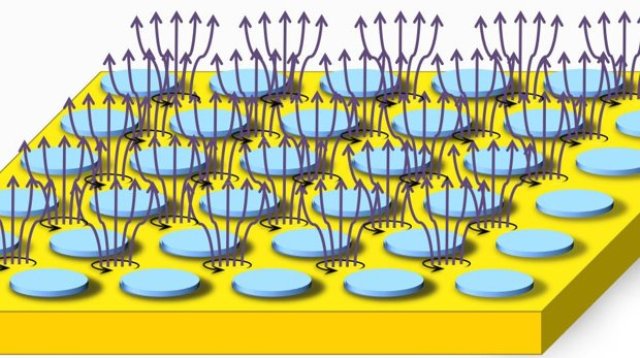A group of scientists from the U.S. Department of Energy’s Argonne National Laboratory and the MESA+ Institute for Nanotechnology at the University of Twente in The Netherlands has observed a dynamic Mott transition in a superconductor.

This breakthrough discovery helps to link classical and quantum mechanics, and provides answers to the mystifying characteristics of the Mott transition. Furthermore, it offers some amount of clarity on the inadequately understood concept of non-equilibrium physics. This discovery could also be a stepping stone towards highly efficient electronics based on the Mott transition. The study has been published in Science.
The principles governing quantum mechanics were laid down in the first half of the 20th century, and since then, researchers have been attempting to resolve quantum mechanics using the principles of Newtonian or classical physics. Over the years, physicists have made rapid advancements in connecting both classical and quantum mechanics; however, experiments linking these two approaches are still a rare occurrence. Physics phenomena are defined as either classical or quantum, but rarely both.
Superconductors are one system that can combine both phenomena. When such materials are cooled down to ultra-low temperatures, they conduct electricity. The superconducting material is penetrated by magnetic fields in the form of small filaments known as vortices. These vortices regulate the materials’ magnetic and electronic characteristics, and exhibit classical as well as quantum characteristics, making it possible to gain a better understanding of the Mott insulator-to-metal transition, a mysterious phenomena of contemporary condensed matter physics.
According to textbook quantum mechanics, the Mott transition should occur in metals, but the materials actually turn out to be insulators. The Mott transition is a complicated phenomenon, which is managed through quantum particle interactions. It continues to remain enigmatic, and it is still unclear whether it is a quantum or classical phenomenon. Furthermore, a dynamic Mott transition has never been directly observed where an electrical current is passed through the system to promote a phase transition from an insulating state to a metallic one. Mott properties are completely disguised because of the disorder present in real systems
The research group at the University of Twente developed a unique system that included as many as 90,000 nano-sized islands of superconducting niobium over the top of a gold film. The vortices in this arrangement find it much easier to organize themselves into energy dimples in the form of an egg crate, thus making the material function as a Mott insulator. This is because the vortices will not shift if a small electric current is applied. However, when the researchers applied sufficient amount of electric current, a dynamic Mott transition was observed as the system started to change into a conducting metal. As the current pushed the material beyond equilibrium, the material’s properties changed.
Valerii Vinokur, an Argonne Distinguished Fellow and corresponding author on the study, commented that the vortex system worked like a temperature-driven electronic Mott transition. He, along with study co-author Tatyana Baturina, studied the data and ultimately discovered the Mott behavior.
“This experimentally materializes the correspondence between quantum and classical physics,” Vinokur said. “We can controllably induce a phase transition between a state of locked vortices to itinerant vortices by applying an electric current to the system,” said Hans Hilgenkamp, head of the University of Twente research group. “Studying these phase transitions in our artificial systems is interesting in its own right, but may also provide further insight in the electronic transitions in real materials.”
With the vortex system, researchers would gain a better understanding of two physics categories that so far have been unclear — out-of-equilibrium systems and many-body systems.
“This is a classical system that which is easy to experiment with and provides what looks like access to very complicated many-body systems,” said Vinokur. “It looks a bit like magic.”
In many-body issues, interactions occur between many number of particles. With present-day hypothesis, many-body systems are too complex to model.
“Furthermore, this system will be key to building a general understanding of out-of-equilibrium physics, which would be a major breakthrough in physics,” Vinokur said.
With ongoing developments to develop faster and smaller electronics, Mott systems provide a suitable alternative to the silicon transistor. Such systems can be changed from conducting to insulating state without requiring major changes in voltage, and thus, would have ability to encode 0s and 1s at higher accuracy and smaller scales than silicon transistors.
"Initially, we were studying the structures for completely different reasons, namely to investigate the effects of inhomogeneities on superconductivity,” Hilgenkamp said. “After discussing with Valerii Vinokur at Argonne, we looked more specifically into our data and were quite amazed to see that it revealed so nicely the details of the transition between the state of locked and moving vortices. There are many ideas for follow up studies, and we look forward to our continued collaboration.”
The data has been described in the study “Critical behavior at a dynamic vortex insulator-to-metal transition,” in the journal 'Science'. Other co-authors are related to the Rome International Center for Materials Science Superstripes, the Siberian Branch of Russian Academy of Science, the Moscow Institute of Physics and Technology, Novosibirsk State University, and Queen Mary University of London.
The Netherlands Organization for Scientific Research (NWO) and Foundation for Fundamental Research on Matter (FOM); the U.S. Department of Energy, Office of Science, Materials Sciences and Engineering Division; the Ministry of Education and Science of the Russian Federation; the Alexander von Humboldt Foundation; and the Marie Curie Intra-European Fellowships for Career Development funded the study.